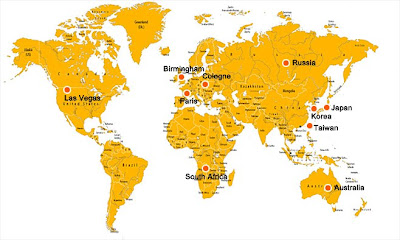Silk sarees tend to have a special place in every Indian lady’s heart. In fact, these are such elegant piece of attire that ladies of different cast, creed and nationalities all over the world happen to be in awe of them.
The fabric-Silk, is actually formed after a series of sincere efforts and hard work by the fabric manufacturers. Silk worms are reared to obtain silk shreds which are then weaved into sarees. The silk sarees manufacturers thus, have to undertake a slow and strenuous process to create beautiful silk sarees. But since, pure silk sarees are quite expensive, the silk saree manufacturers mix pure silk shreds with other synthetic yarns to make affordable silk saree options for serving varied classes of customers. Although nothing can beat the rich look and feel of pure silk sarees. Pure silk carries an inherent sheen to it which makes them a clothing class apart.

Indian silk sarees hold a genuine repute all over the world and this is precisely the reason why silk saree business is flourishing by leaps and bounds in India. Though besides India, China also happens to be a major silk exporter for the entire world but no one can beat the kind of variety India offers in silk fabric and silk sarees. There is a plethora of silk saree options belongimg to different states in India. Benarasi silk, patola silk, jamdani silk, jamavar silk, south silk, kanjivaram silk, garhwal silk, samu silk are a few mentions from the long list of silk sarees available in India. In the southern part of India, a considerable section of population is indulged into silk saree business. Be it the rearing of silk worms or the weaving of sarees, silk saree business form an integral part of primary occupation even in the remote parts of southern India.
Silk designer sarees make wonderful wedding sarees as these remain the first choice for a typical Indian bridal look. Simple silk sarees become all the more alluring with the fine craftsmanship done on these sarees. Whether it’s a glittering zari border or finessed hand embroidery on silk, such additional designing enhance the charm of silk sarees manifold. Though, the latest trend to hit the markets these days is the service of customized silk sarees. The silk saree manufacturers and designers now offer the customer to get a customized saree designed as per the particular choice or requirement. The color combination and design on silk can be tailor made to serve the fancies of customers. Given the special efforts that these custom made silk sarees take on the part of manufacturer; such sarees are priced a little higher than the regular pure silk sarees.
Like other businesses, silk sarees business too has gone online to reach every corner of the world just at the hit of a click. There are a number of sites offering the vast range of silk sarees for sale. One can order it sitting at home and get it home delivered within a span of few days!
The fabric-Silk, is actually formed after a series of sincere efforts and hard work by the fabric manufacturers. Silk worms are reared to obtain silk shreds which are then weaved into sarees. The silk sarees manufacturers thus, have to undertake a slow and strenuous process to create beautiful silk sarees. But since, pure silk sarees are quite expensive, the silk saree manufacturers mix pure silk shreds with other synthetic yarns to make affordable silk saree options for serving varied classes of customers. Although nothing can beat the rich look and feel of pure silk sarees. Pure silk carries an inherent sheen to it which makes them a clothing class apart.

Indian silk sarees hold a genuine repute all over the world and this is precisely the reason why silk saree business is flourishing by leaps and bounds in India. Though besides India, China also happens to be a major silk exporter for the entire world but no one can beat the kind of variety India offers in silk fabric and silk sarees. There is a plethora of silk saree options belongimg to different states in India. Benarasi silk, patola silk, jamdani silk, jamavar silk, south silk, kanjivaram silk, garhwal silk, samu silk are a few mentions from the long list of silk sarees available in India. In the southern part of India, a considerable section of population is indulged into silk saree business. Be it the rearing of silk worms or the weaving of sarees, silk saree business form an integral part of primary occupation even in the remote parts of southern India.
Silk designer sarees make wonderful wedding sarees as these remain the first choice for a typical Indian bridal look. Simple silk sarees become all the more alluring with the fine craftsmanship done on these sarees. Whether it’s a glittering zari border or finessed hand embroidery on silk, such additional designing enhance the charm of silk sarees manifold. Though, the latest trend to hit the markets these days is the service of customized silk sarees. The silk saree manufacturers and designers now offer the customer to get a customized saree designed as per the particular choice or requirement. The color combination and design on silk can be tailor made to serve the fancies of customers. Given the special efforts that these custom made silk sarees take on the part of manufacturer; such sarees are priced a little higher than the regular pure silk sarees.
Like other businesses, silk sarees business too has gone online to reach every corner of the world just at the hit of a click. There are a number of sites offering the vast range of silk sarees for sale. One can order it sitting at home and get it home delivered within a span of few days!






























